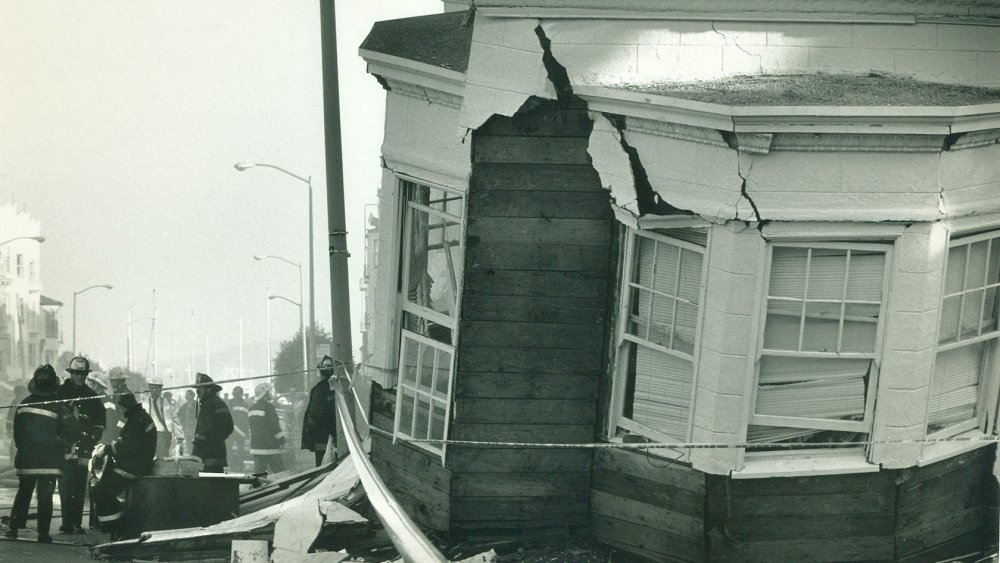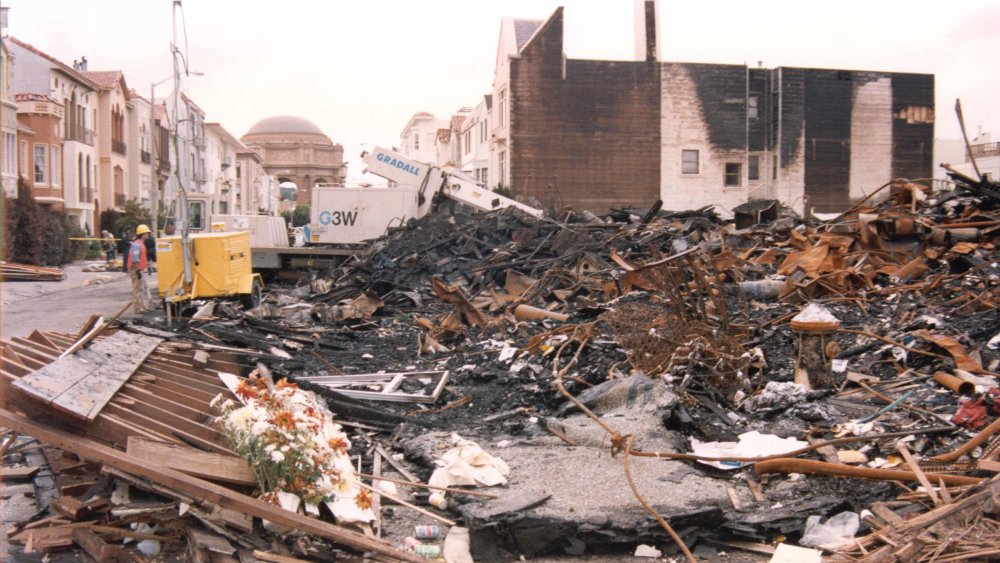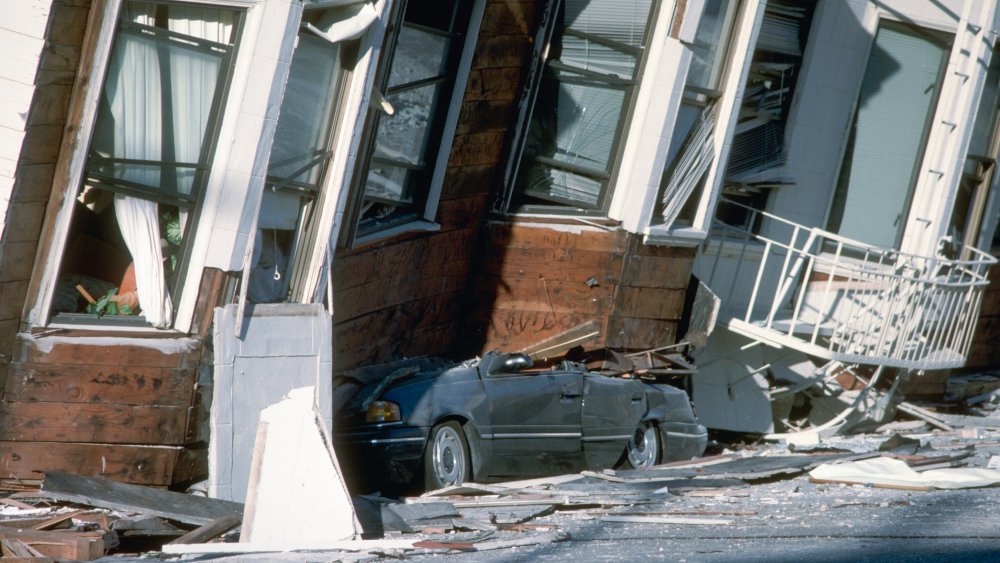The Crazy True Story Of The 1989 Loma Prieta Earthquake
Earthquakes are more common than many people realize. According to Michigan Tech, up to 900,000 2.5 magnitude or lower earthquakes occur per year, too small to be felt, but measurable by seismologists. By contrast, only about 100 earthquakes of a property-destroying magnitude of 6.1 to 6.9 occur per year. The surface of our planet may feel and seem stable, but in reality the 25-mile thick crust, which accounts for only 1 percent of Earth's mass, per National Geographic, is always shifting and moving.
This is especially the case along the Ring of Fire, described by National Geographic as a circular grid of tectonic plate boundaries that scrape against each other and encircle the entire Pacific Ocean. On one side there is Japan, and on the other, California. The San Andreas fault separates the North American Plate and the Pacific Plate, as described in an NPC Bay Area Loma Prieta earthquake documentary posted on YouTube, and runs directly along the coast of southern California. Experts have talked about an impending "Big One" earthquake for decades, as outlined on 89.3 KPCC Southern California, and numerous survival guides exist outlining earthquake preparedness.
The 1989 Loma Prieta earthquake, while not the "Big One," was a complete catastrophe, nonetheless. In a mere 15 seconds, per Britannica, the 6.9 magnitude quake caused $6 billion in property damage, injured 3,800 people, killed 67, and reshaped the face of San Francisco forever. As stated on NBC Bay Area, over 18,000 homes were damaged, and entire businesses wiped out.
A tragic wake-up call about earthquake preparedness
It was 5:04 p.m. on October 17. Cars were heading home from work and filing across the San Francisco-Oakland Bay Bridge and Cypress Street Viaduct (Nimitz Freeway). As stated on History, the city was ready for the third game of the World Series, scheduled to start at 5:30. Two local teams, the Oakland Athletics and San Francisco Giants, were prepping at Candlestick Park with live, televised cameras pointed at them. This is the moment when shockwaves shook the city, out from their epicenter about 60 miles southeast, 9 miles northeast of Santa Cruz, as stated by the US Geological Survey.
Bay Area resident Dr. Steven Brattesani described a scene straight out of a disaster movie: "You could actually see the wave that was coming from the south going north. It made every car jump in the air." Firefighter Tim Peterson, who got pinned in his truck with two broken ankles, said, "I was getting ready to just see what it's like to die. It's going to be over real soon, and I was waiting."
Pieces of the Bay Bridge collapsed and blocked the passageway for a month. The Cypress Freeway collapsed onto its lower deck and instantly killed 42 people. The Marina, built on loose soil, was largely obliterated. Pipes burst and fires broke out, compounding the destruction. It was the biggest earthquake to hit San Francisco since the 7.9-magnitude earthquake of 1906, and served as a profound wake-up call.
Drop, Cover, and Hold On
The Loma Prieta earthquake, named after the Loma Prieta peak in the Santa Cruz mountains near its origin, permanently changed not only San Francisco, but the entire region. San Francisco's bridges, which had accounted for most of the quake's deaths, underwent seismic retrofitting. Nearby communities such as Watsonville, several miles away from the epicenter, overhauled their building regulations to reinforce older structures and regulate new structures. Santa Cruz, also hit hard, lost every single one of its 50-100-year-old buildings. Former Santa Cruz redevelopment director Ceil Cirillo said, "Streets were just a tumble of bricks and building parts."
At present, California is acutely aware of the need to be ready for earthquakes. 2019 marked the 30th anniversary of the Loma Prieta earthquake, and served as a reminder to stay vigilant. California Earthquake Authority CEO Glenn Pomeroy said, "Anniversaries for big earthquakes often serve as painful reminders of why we need to know how to Drop, Cover, and Hold On when the ground shakes, and know how to financially recover from damage that may be expensive to repair." A number of mid-sized earthquakes have hit the area since 1989, but haven't breached magnitudes higher than the mid-4.0s.
Disasters can also serve as reminders of strength and community. In the true spirit of endurance, the 1989 World Series commenced, anyway, and only 10 days after the earthquake. The series would come to be called, accurately so, the "Earthquake Series."


